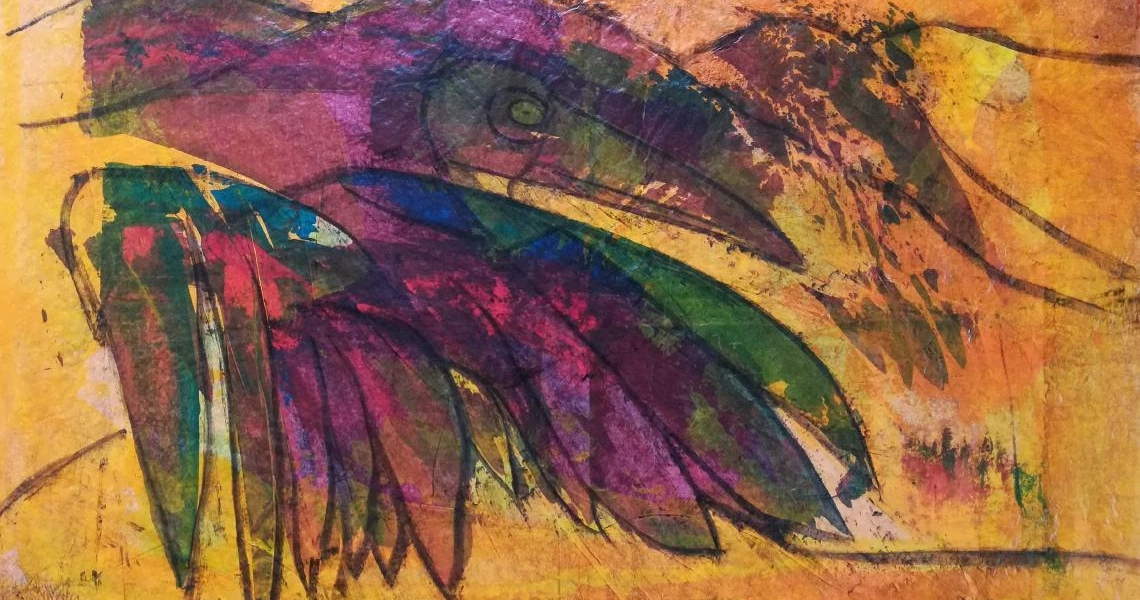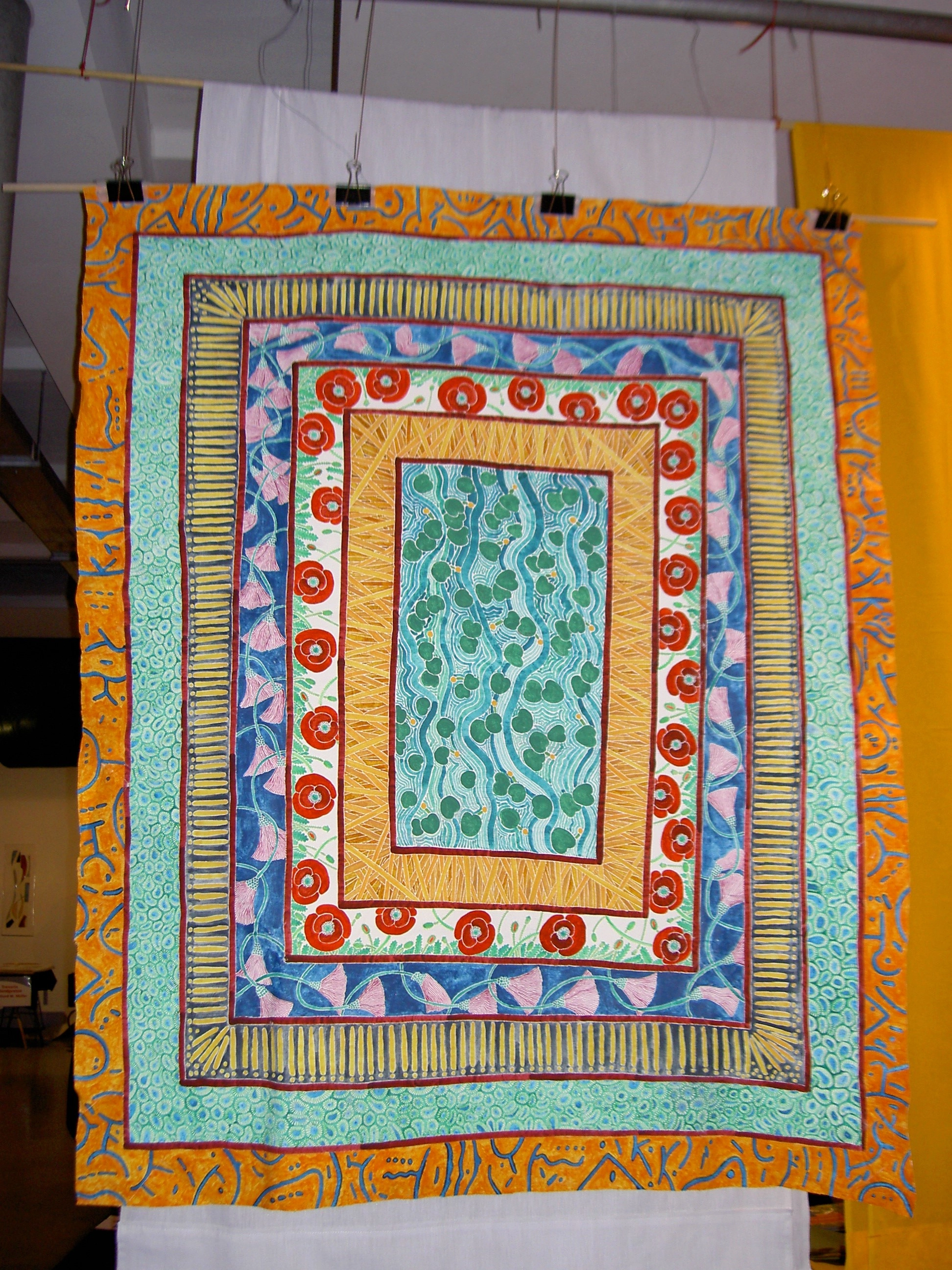
Ornament
Ornament

Ornament is like a meadow of flowers. When I look at the meadow superficially it is green, only when I look closer do I recognise the multitude of individual flowers and plants. Just as in the meadow I can go from the whole to the one and back again, it is also possible with ornament to make completely unexpected discoveries.
This contemplation, but also the artistic creation itself, gives the ornament an amazing possibility of reaching into our spirit. Religions in particular recognised this power of ornamentation early on and used it to their advantage. Just think of the decoration of prayer rooms or the initiation of people into their religious environment. I cannot escape this power when I enter artistically decorated sacred rooms or look at books of the same kind. I experience ornament even more deeply when I create it myself. The creative power inherent in all human beings then unfolds through me in the here and now. The divine inherent in every human being unfolds in it.
Especially in the religious realm, ornament takes on a special depth. Ornament transforms religious statements, makes them more mystically tangible on a different level than words can. The understanding of an ornament does not take place through the intellect, but through the emotions. Unfortunately, we are no longer as practised in this way of looking at things as generations before us. But we can get involved in the adventure of looking again. We can learn to enjoy the ornament, just as we enjoy a piece of music or a meal, although we know neither the notes nor the recipe of the dish. We can follow the main lines, recognise the finely worked lines, often reaching a particular depth of the ornament at hand. Slowly, the ornament reveals itself to us in all its fullness. We are about to discover its beauty and its inner meaning.
In the past, the separation of ornament and image was not seen as strictly as it is today. Figurative representations were provided with ornaments, representational sculptures were adorned with ornaments and thus a profound change of the represented was achieved.
Ever since there have been human beings, one could say, ornament has also existed. Starting with simple line ornaments, it has made a development through human history that was only abruptly halted in the western hemisphere of our cultural sphere at the beginning of the 20th century. Adolf Loos was a key figure with his book "Ornament and Crime", with which he proclaimed the end of ornament around 1908. The deep meaning of ornament was forgotten. One could say that an attempt was made to eliminate ornament from art. In other cultural areas, it has persisted to this day. In Islam, the idea of ornament does not only apply to the visual arts, but also to music and poetry. Muslims see in the creation of ornament not man as the agent, but God, in a sense a mystical concept or experience.
This ostracism of the ornament in our cultural sphere is comparable to censorship, to a dictate to which many have submitted. One of the causes was certainly the immense amount of work that lies hidden in an ornament, which with increasing industrialisation became more and more, unaffordable.
It is only since the early middle of the 20th century that ornamentation has been rediscovered in our cultural circle. Here it was above all Matisse who introduced a new formal language into the modern understanding of ornament.
What most contemporary artists probably overlook about ornament is the fact that ornament is actually the first abstraction in art. What is ignored is the idea that ornament also embodies the freedom of the imagination and involves the free play of the imagination. Starting from various basic forms, I see the ornament split into two directions. On the one hand, there is the direction of the regular division of surfaces, which has developed largely independently, right up to our own day. The second direction, that of the irregular division of surfaces, was less spectacular, but can still be found today in isolated cases.
In my artistic work, this direction of irregular surface division has always fascinated me. I could already find this irregular division of surfaces in very old ornaments. I have taken up this idea for myself and developed it artistically. In this way, I have already written several books that take this idea into account.
For my artistic understanding, ornament and art have nothing to do with perfection, for me this term is related to the machine. We don't need to compare or measure ourselves with machines, they don't have a soul that is expressed in their work.
Ornament is not dependent on repetition, but on the desire to make an inner depth visible and tangible. So it must have been this depth that inspired Celts as well as Chinese in the same epoch. They independently used the same spiral ornaments in their culture.
For today's artists who embark on the adventure of ornamentation, it is a matter of finding their very own way to and in ornamentation. Ornament is in a certain way also a limitation, and limitation can be more, if one knows how to achieve the maximum possible within the limits of the marked out frame.
One more thought on ornament in conclusion. Ornament is everywhere where people live. A commonality, then, that unites us all. Perhaps we could find peace among ourselves through what connects us. In the past, but also today, ornamentation has acted as an artistic bridge between cultures. This becomes clear, for example, in the vine leaf arabesque. In the past, they were adopted across cultures in the Euro-Asian region, modified accordingly.
Through the computers of our time, the ornament has now found its way back into the most diverse areas of art. So it remains interesting to keep an eye on the further development of ornament.
G.J.W.